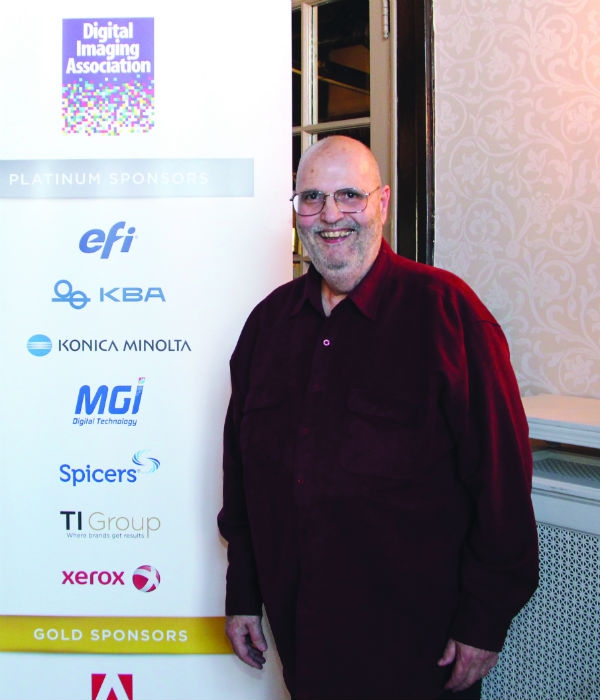
Features
Profiles
Spotlight: Frank Romano on Digital Print Evolution
February 6, 2017 By PrintAction Staff
 Frank Romano at The Boulevard Club in Toronto for the DIA's annual luncheon.
Frank Romano at The Boulevard Club in Toronto for the DIA's annual luncheon. Frank Romano, Professor Emeritus of the Rochester Institute of Technology, in December travelled to Toronto to provide the keynote speech at the Digital Imaging Association’s annual holiday luncheon, held on the waterfront at The Boulevard Club.
He has spent more than 40 years in the printing and publishing industries and is seen as one of the printing world’s leading technological pundits, producing hundreds of articles for publications from North America and Europe to the Middle East, Asia and Australia. Romano is the author of over 44 books, with a vast majority focusing on the arrival of digital printing. He continues to teach courses at RIT and other universities and works with students on unique research projects.
The title of Romano’s DIA keynote, Digital Printing, From Good Enough to Nanography, describes one of the most pressing issues of technology investment on the minds of printers across North America. The following excerpts from Romano’s speech describe the potential disruption of inkjet printing on the offset world.
Wrongly focused on page impressions
Frank Romano: The way they measure the output from these machines is page impressions. If you reduce everything to just a page, you have denigrated it – you have insulted it – because a page has no value. When the page is in a brochure it has value. When a page is in a book it has value… They are not pages, they are parts of a product and that product has value. And if we keep making that a page, we reduce the value in the product and that is an issue.
Too many digital sheet sizes today
FR: Let’s get rid of all of these stupid sizes. We cannot deal with every different sheet size you can imagine. I’m sorry, the paper companies are not going to support you – they can’t anymore. They do not have the resources. They do not even have the warehouse space.
Digital must move beyond CMYK
FR: The problem is that the majority of these [inkjet and digital] machines are CMYK and yet we all know that we have to handle brand colours – Pantone colours… That is one of the reasons why Indigo sells so well. HP has done a very good job because of the fact that you can match almost every Pantone colour, every brand colour. That is why they are so dominant in the label market.
It is just a matter of time, but the problem is without the brand colours they are not going to get into the packaging market… And, by the way, telling me you can do 80 percent of the Pantone colours with CMYK [is] not an argument.
A future in water-based UV inking
FR: I think the next big movement has to be water-based UV. UV is really a key system because it can print on almost anything. It is impervious to the weather. That is going to be a key technology.
Printing beyond paper
FR: The next generation is going to print on new kinds of substrates. It is going to go way beyond paper… The home decor market, make the pattern of your sofa match your wall paper, if you so desire. Make your windows look like Tiffany glass. You can do that now very easily with wide-format inkjet.
Offset and inkjet partnerships like Komori and Landa
FR: What Komori is doing not only with Landa but with Konica and others… Mr. Komori is very shrewd and has created partnerships with other companies to build the mechanism as they build the digital printer… what Heidelberg is doing right now with Fuji. You are going to see a lot more of that as the offset companies try to figure out how to keep some of their business.
By the way, when you buy a Landa machine, the base is shipped from Japan and the printing part is shipped from Israel and then they put it together in your plant. It is going to be very interesting to see how that works out.
Importance of page-wide print heads
FR: The other big change has been single-pass inkjet, instead of having the head move back and forth. Now that was pioneered by HP with a wide-format roll-fed machine… 40 inches wide by 500 feet a minute, CMYK, can’t beat it and it is selling very well worldwide.
Oce is doing the same thing with their roll-fed machines and others. Impika has been down that road and then Xerox acquired it and has improved the product line significantly.
Cost of new digital machines
FR: The thing that bothers me more than anything else is that we are a capital-intensive business and these machines are not cheap anymore.
[Technology suppliers] figure we all have money and yet that is one of my issues – we don’t. If you could get the machine at a reasonable price, we could then build a business and buy more machines, and buy more consumables… But right now I think they have priced them a little bit too high.
Print this page